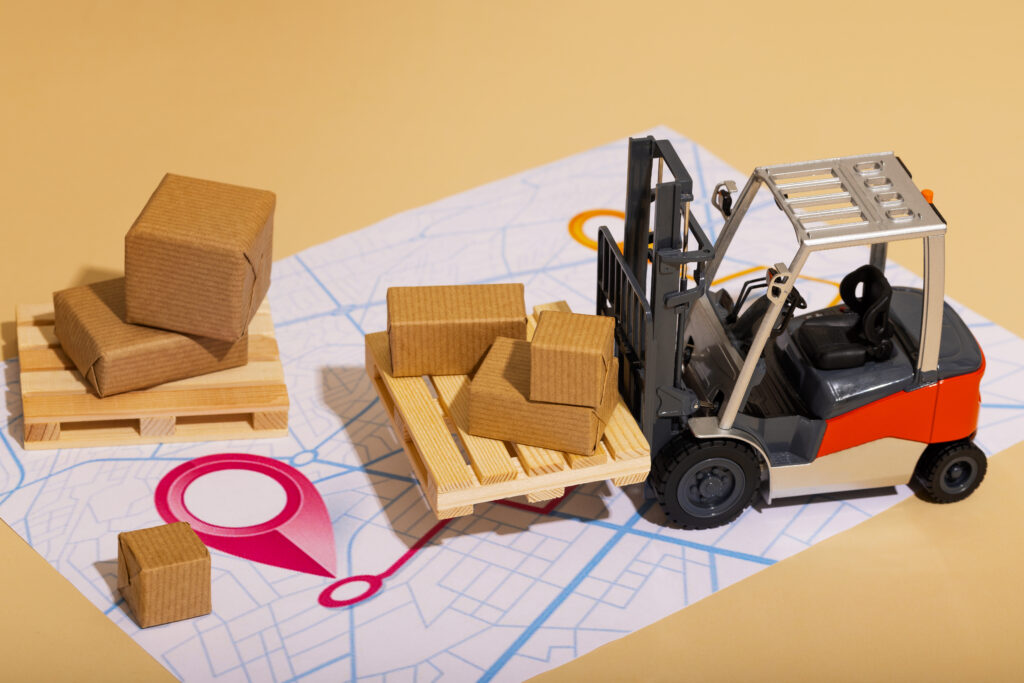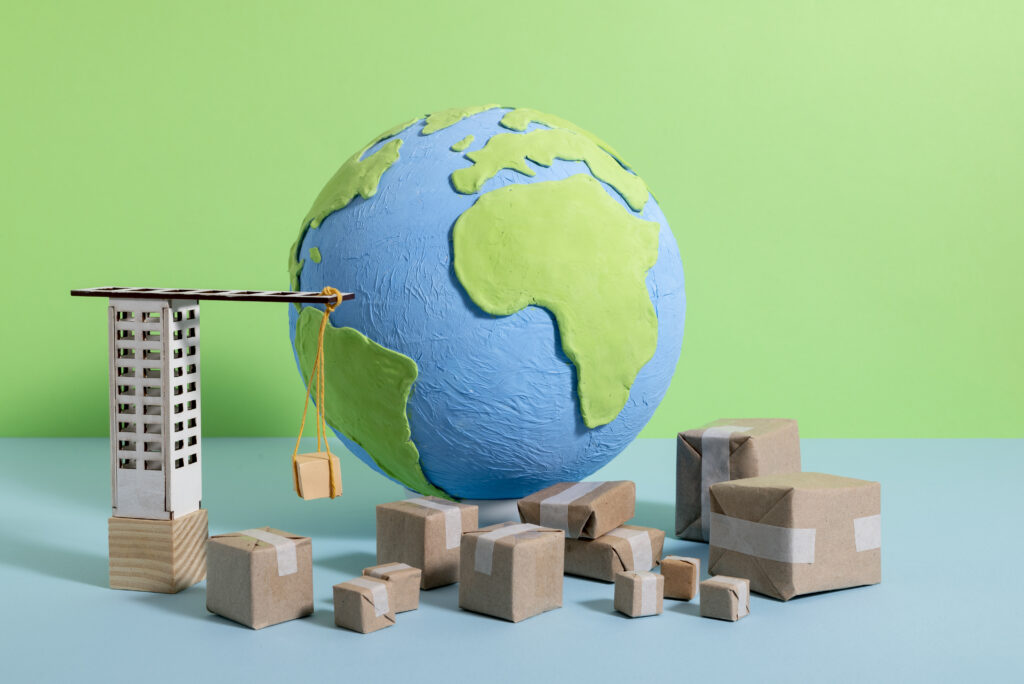How good supply chain management helps your business succeed
Effective supply chain management (SCM) ensures that goods and services move seamlessly from suppliers to customers, creating a robust framework for operational success. By optimising every step in the supply chain—procurement, production, logistics, and delivery—businesses can reduce costs, improve efficiency, and enhance customer satisfaction.
A well-structured supply chain can significantly lower expenses by streamlining operations, minimising waste, and leveraging economies of scale. Companies that master SCM are better equipped to forecast demand, manage inventory levels, and adapt to changing market conditions, which helps in avoiding overstocking or shortages.
Moreover, a responsive and resilient supply chain is critical in today’s fast-paced market. Businesses that can quickly adapt to disruptions, whether due to natural disasters or global economic shifts, maintain a competitive edge. Incorporating technology, such as real-time tracking and predictive analytics, enables smarter decisions and greater visibility across the supply chain.
Effective SCM is also integral to customer satisfaction. Timely delivery and consistent product availability create a positive customer experience, fostering trust and loyalty. For companies looking to differentiate themselves, a well-managed supply chain is not just an operational necessity—it’s a strategic advantage.
By investing in optimisation and innovation, businesses can transform their supply chain into a powerful driver of growth and success.

What exactly is a supply chain?
A supply chain is the complete journey a product takes, starting from its raw materials to its final form in the hands of a customer. Think of it as a road map that connects all the essential steps and players involved in creating and delivering goods.
This process involves a network of suppliers who provide the raw materials, manufacturers who create the finished product, and distributors or retailers who make it available for purchase. For instance, the supply chain for a smartphone includes sourcing rare materials, assembling components, packaging, shipping, and displaying it in stores.
Every link in this chain is vital for ensuring products move efficiently, cost-effectively, and on time. A well-functioning supply chain keeps businesses competitive and customers happy by ensuring the right products are available when and where they’re needed.
How do goods and services move through the supply chain?
Imagine your morning coffee—its story begins on a farm where coffee beans are carefully grown and harvested by skilled farmers, often in distant countries. After harvesting, the beans are processed, roasted, and packaged before making their way through distributors and shipping channels to reach stores or cafés. Finally, you purchase your coffee, completing its journey from farm to cup.
This process is the supply chain at work. However, it’s not just about the physical movement of goods. A supply chain also involves a complex flow of information, such as tracking inventory levels, and financial transactions to pay suppliers and distributors. This ensures each step runs smoothly, maintaining efficiency and reliability.
Your coffee’s supply chain exemplifies how interconnected systems work together to deliver everyday products, seamlessly bridging the gap between producers and consumers.
Why are supply chains important in different industries?
Supply chains vary widely depending on the products they support. For instance, delivering fresh food to your table prioritizes timing and freshness. Perishable items like fruits and vegetables require quick transportation and careful storage to ensure they arrive in peak condition. Any delays can compromise quality and result in waste, making speed and efficiency critical.
In contrast, the tech industry focuses on precision and global distribution. Manufacturing a smartphone involves sourcing specialized components from multiple countries, assembling them with meticulous care, and ensuring timely delivery to retailers worldwide. The emphasis here is on maintaining quality standards and coordinating complex logistics.
Despite these differences, a well-managed supply chain remains essential for both industries. It ensures products reach consumers without unnecessary delays or added costs, enhancing efficiency, reducing waste, and meeting customer expectations. Whether it’s fresh food or cutting-edge technology, the goal is the same: delivering the right product, at the right time, and in the right condition.
Key components of a supply chain
Suppliers
Suppliers are the first link in the supply chain. They provide the raw materials or parts needed to create a product. Think of them as the source of everything that’s made. If suppliers don’t deliver the right materials on time, everything else gets held up.
For example, car manufacturers rely on suppliers to provide steel, rubber, and electronics. If any of these parts are delayed or of poor quality, it can slow down production and lead to costly delays for the entire process.
Manufacturers
Once the materials are in hand, manufacturers take over. They’re the ones who turn raw materials into the products we use every day. This might involve assembling parts, refining materials, or packaging the final product.
For instance, in the electronics world, manufacturers put together all the components—like circuit boards and screens—to create the smartphones we rely on. The speed and accuracy of this process are critical. If something goes wrong during manufacturing, it can lead to defects or delays, which ultimately affect how quickly products can reach the market.
Warehouses
After products are made, they need a place to be stored and organized before being shipped out. That’s where warehouses and distribution centers come in. Warehouses store products in bulk, making sure there’s enough supply to meet demand.
Distribution centers
Distribution centers then take these products and manage their journey to stores or directly to your home. For example, when you order something online, it’s likely picked from a warehouse and sent through a distribution center to ensure it gets to you quickly. This system helps keep everything running smoothly, so products are always available when you need them.
How supply chains work

A supply chain is a sequence of interconnected processes that guide a product from its origin to the final customer. It begins with sourcing raw materials, which are then transported to manufacturing facilities. Here, these materials are transformed into finished goods through production processes.
Once the products are made, they are stored in warehouses until needed. From there, they move to distribution centers, which act as hubs to organize and dispatch goods efficiently. Finally, products are delivered to stores or shipped directly to customers.
Each step in the supply chain relies on precise timing and collaboration. For example, raw materials must reach the factory on schedule to avoid production delays. Similarly, effective logistics ensure that finished products are delivered on time to meet customer demand. A well-coordinated supply chain ensures efficiency, cost savings, and customer satisfaction by keeping every part of the process running smoothly.
Moving goods, information, and money
It’s not just the products that move through the supply chain—information and money flow through it, too. For example, businesses share data about demand and production schedules to keep everyone aligned.
At each stage, there’s also a financial exchange, like paying for raw materials or receiving payment from customers. These flows of goods, information, and money all need to sync up to keep the supply chain running efficiently, which helps keep costs down and customers happy.
How supply chains differ across industries
Supply chains can vary a lot depending on the industry. In fashion, for instance, speed is key to getting new styles into stores quickly. Meanwhile, in the pharmaceutical industry, the focus is on safety and meeting regulations at every step. Despite these differences, the goal is the same: get products from their starting point to the end customer as efficiently as possible.
Supply chain management: What it involves
Supply chain management is about keeping all the parts of the supply chain running smoothly. It’s like being the conductor of an orchestra, making sure that every part—from suppliers to manufacturers to delivery—works together in harmony. Good supply chain management can lower costs, boost efficiency, and make sure customers get what they want, when they want it.
a. Procurement
Procurement is the first step in the process. It’s all about buying the raw materials or parts needed to make a product. But it’s more than just shopping—it’s about finding the right materials at the right price. Good procurement can save money and help avoid delays in production.
For example, a car manufacturer needs to buy high-quality steel at a good price to keep making cars without interruption. The goal is to get the best value while making sure the materials are reliable and delivered on time.
b. Logistics and transportation
Logistics and transportation focus on getting goods where they need to go, efficiently and on time. This includes everything from getting raw materials to the factory to delivering finished products to stores or directly to customers.
The way products are transported—whether by truck, ship, plane, or train—can have a big impact on costs and delivery times. For example, shipping by sea is usually cheaper but slower, while air freight is faster but more expensive. Managing logistics well ensures that products arrive on time and in good condition, which keeps customers happy.
c. Inventory management
Inventory management is about having the right amount of products on hand. You don’t want too much, which can waste money, or too little, which can lead to stockouts and missed sales. Good inventory management helps businesses strike the right balance, making sure they can meet customer demand without overspending.
Benefits of effective supply chain management

When a supply chain is managed well, the whole business benefits. One of the biggest perks is saving money. By making operations more efficient, companies can cut down on unnecessary costs, like storing too much inventory or using slow transportation methods. This not only saves money but also makes everything run smoother.
Making customers happy
A smooth supply chain also means products are available when customers want them, which keeps them satisfied. For instance, companies like Amazon have perfected their supply chain management to ensure fast, reliable deliveries, which is a big reason why customers keep coming back.
Real-world success stories
Walmart is a great example of how effective supply chain management can create a competitive edge. They’ve fine-tuned every part of their supply chain, from procurement to inventory management, which allows them to offer low prices and a huge selection of products. This efficiency helps them save money and pass those savings on to customers, making them a leader in the retail industry.
Common supply chain challenges
Demand variability
One big challenge in supply chains is handling changes in demand. Customer demand can be hard to predict—it might spike during holidays or drop during a slow season. These fluctuations can throw the supply chain out of balance, leading to either too much stock or not enough.
To deal with this, companies try to forecast demand as accurately as possible and adjust their production schedules to match. For example, a toy company might increase production before the holiday season and slow down afterward to avoid having too much leftover stock.
Supply disruptions
Another common problem is disruptions in the supply chain. These can be caused by things like natural disasters, political issues, or problems with suppliers. For example, if a key supplier has a factory fire, it could delay the whole production process.
To manage these risks, companies often create backup plans, such as using multiple suppliers or keeping extra stock on hand. This way, they can keep the supply chain moving even if something goes wrong.
Logistics issues
Logistics challenges, like delays in transportation or rising fuel costs, can also cause problems in the supply chain. For instance, if a shipment is delayed, it can lead to late deliveries and unhappy customers. Managing these issues requires careful planning and real-time tracking to keep everything on schedule.
Technology’s role in supply chain management
ERP systems
Enterprise Resource Planning (ERP) systems help streamline the supply chain by bringing all the different parts of a business together in one system. These systems manage everything from procurement to inventory, making sure nothing falls through the cracks.
For example, an ERP system can automatically order more materials when stock is running low, ensuring production doesn’t come to a halt. By keeping everything connected and automated, ERP systems help companies avoid mistakes, improve efficiency, and make smarter decisions.
AI and automation
Artificial Intelligence (AI) and automation are changing the game in supply chain management. AI can predict demand more accurately by analyzing tons of data, helping companies avoid overstocking or running out of products.
Automation speeds up routine tasks like order processing and inventory tracking, reducing the need for manual work. These technologies make the supply chain faster and more responsive, helping businesses keep up with changing market demands.
Blockchain
Blockchain technology adds a layer of trust and transparency to the supply chain. It’s like a digital ledger that records every step a product takes, from raw materials to the final sale. This makes it easier to trace the origin of products, prevent fraud, and ensure everything is as it should be.
The future of supply chains

Globalization and sustainability
As the world becomes more connected, supply chains are getting more complex. Companies are now managing global networks that require careful coordination across different countries and regulations.
At the same time, there’s a growing focus on sustainability—businesses are looking for ways to reduce their environmental impact, like using eco-friendly materials or optimizing transportation routes to cut down on emissions. Some companies are even investing in green technologies to make their supply chains more sustainable.
Technological advancements
Technology is continuing to evolve, and supply chains need to evolve with it. New advancements like the Internet of Things (IoT), drones, and self-driving vehicles are expected to transform how products are tracked and delivered.
These innovations could lead to faster deliveries, better inventory management, and lower costs. However, businesses will need to stay flexible and ready to adapt, as the supply chain landscape is likely to keep changing rapidly in the coming years.
The bottom line
In short, understanding and managing the supply chain is crucial for any business. Each step, from sourcing materials to delivering products, plays a key role in success. As technology and global trends keep evolving, businesses that stay adaptable and efficient will continue to thrive.
FAQs
How is a supply chain different from a value chain?
A supply chain is all about getting a product made and delivered, while a value chain looks at how each step in that process makes the product better and more valuable to the customer.
How does globalization change the way supply chains work?
Globalization adds layers of complexity by involving different countries in the process. This means longer shipping times and having to deal with different rules and regulations across borders.
What are some common problems that can mess up a supply chain?
Common problems include natural disasters, supplier hiccups, and sudden changes in what customers want. These issues can cause delays, increase costs, and make products harder to get.
How can businesses make their supply chains stronger?
Businesses can make their supply chains stronger by having backup suppliers, keeping extra stock on hand, and using technology to quickly spot and fix potential problems.
Why is sustainability important in supply chains?
Sustainability is about making supply chains more eco-friendly, like cutting down on waste and using greener materials. It’s becoming a bigger deal as people and companies care more about the environment.


